One of the best things about a DIY project is that you get to create the perfect product for you. I love this, because I find a lot of things available in the shops are only almost perfect. For example, I searched unsuccessfully for my ideal cushion covers – simple and pared-back, but still patterned with darker colours. So I finally decided to make them myself using simple potato prints. Here’s how.
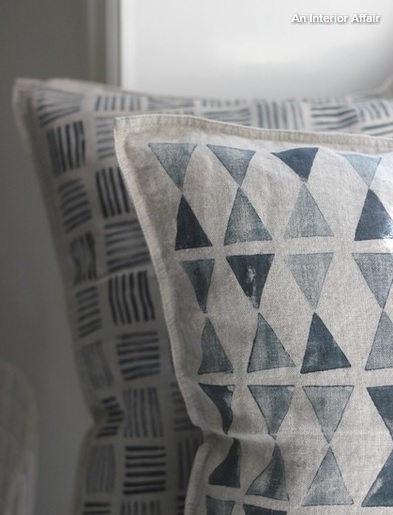
Once you’ve started making your own prints, you’ll probably find yourself wanting to do more. You can use your favourite shapes and motifs, try a personal monogram, or invent something new.
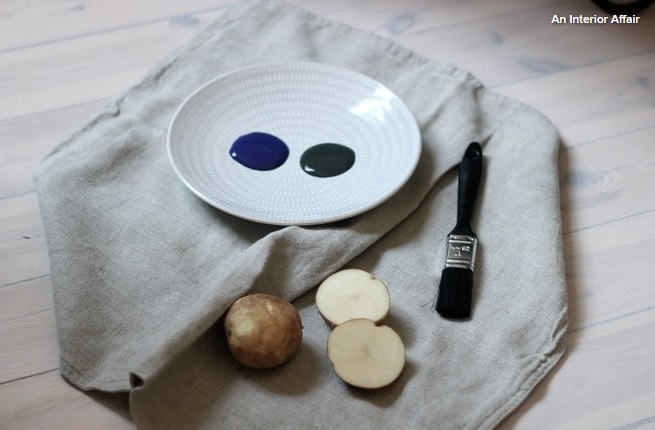 Materials
Materials
- Potatoes
- Craft knife or sharp paring knife
- Textile paint
- Plate or other shallow container
- Scrap fabric for testing and pressing
- Paintbrush (optional)
- Newspaper or other padding (optional)
- Cushion cover(s) in a natural fabric, such as linen or cotton (you could also give pillowcases or tea towels a new pattern)
- Iron
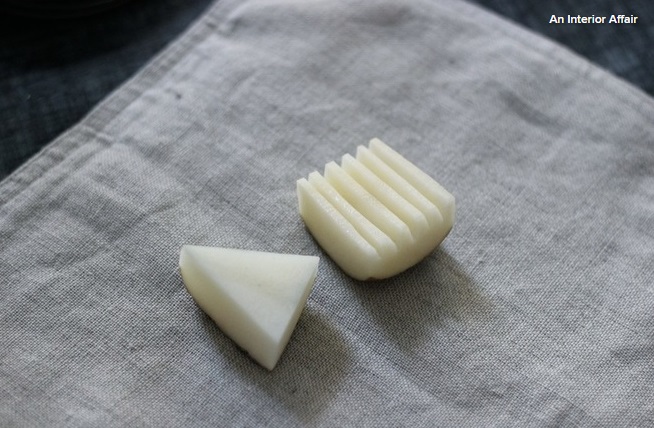 1. To make your potato stamp, cut the potato in half. With a small, sharp knife, shape each potato half however you want. I suggest simple geometric shapes, such as triangles, squares or stripes. Always use caution when working with cutting tools.
1. To make your potato stamp, cut the potato in half. With a small, sharp knife, shape each potato half however you want. I suggest simple geometric shapes, such as triangles, squares or stripes. Always use caution when working with cutting tools.
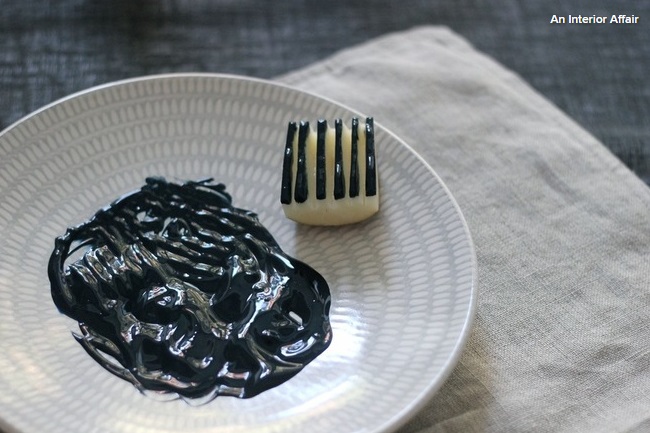 2. Spread the paint on a plate or other washable, shallow container, so you can easily get an even layer when you dip in the potato stamp.
2. Spread the paint on a plate or other washable, shallow container, so you can easily get an even layer when you dip in the potato stamp.
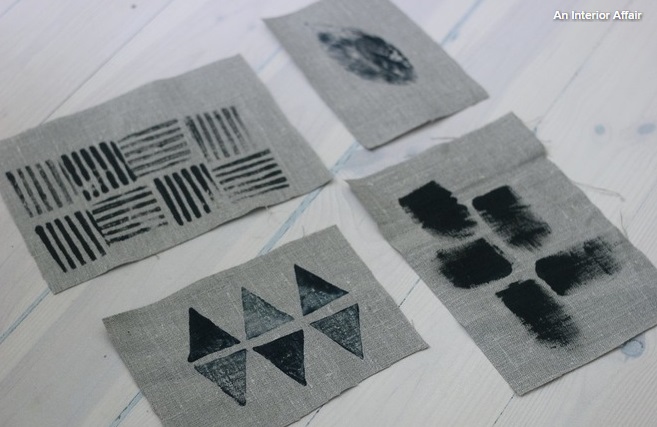
Do a trial run on scrap fabric (or paper). Adjust the amount of paint and pressure you use on your potato stamps to discover the effects you like best.
Here you can see how I’ve tried a few techniques before deciding on my favourites: the top left is a striped potato print; the top right is an imprinted leaf; the bottom left is a triangular potato print, and on the bottom right are freehand brushstrokes.
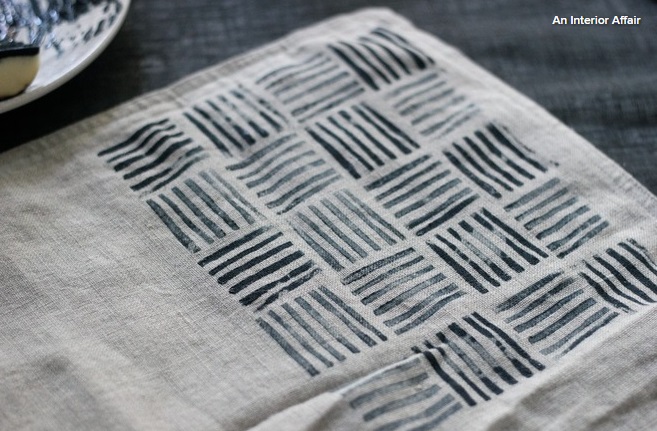
3. If you’re working on a multi-layered textile, such as a cushion cover or pillowcase, insert newspaper or other padding between the fabric layers to prevent the paint from bleeding through. Here you can see how I’ve used the same stamp in different directions to create a more interesting pattern.
If you like the look of a regular pattern that fits neatly within a border, adjust the size and spacing of your potato stamps to fit your design.
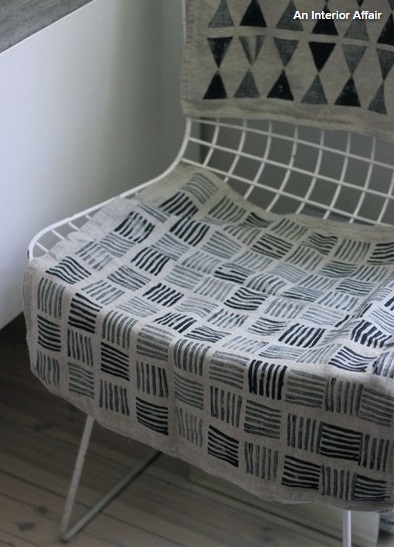
4. Allow the paint to dry. I think it looks nice when the colours vary in tone due to the different amounts of colour left on the stamp as you go. However, this also leads to the paint drying unevenly, so leave the textile lying flat for at least an hour.
When the fabric is dry, heat-set the colour by ironing the back of the fabric for about three minutes on a fairly high heat setting (the same as for cotton) with a piece of scrap fabric in-between.
Once the colour has set (and unless otherwise noted in the care instructions), you can wash your textile in warm water (40ºC).
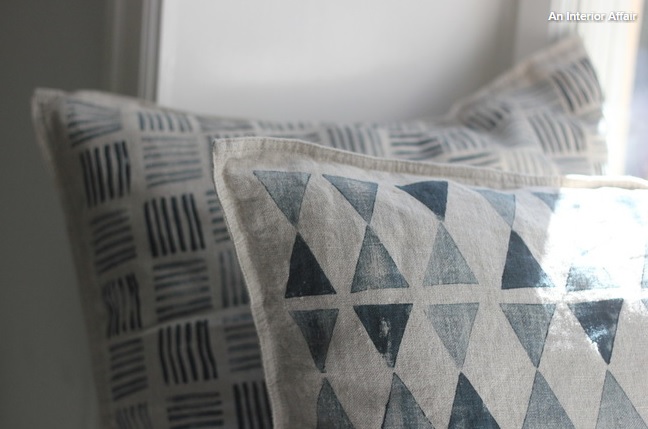
Done!
The end result is very personal because you are the designer who chose the shapes and colours.

Source: Houzz
